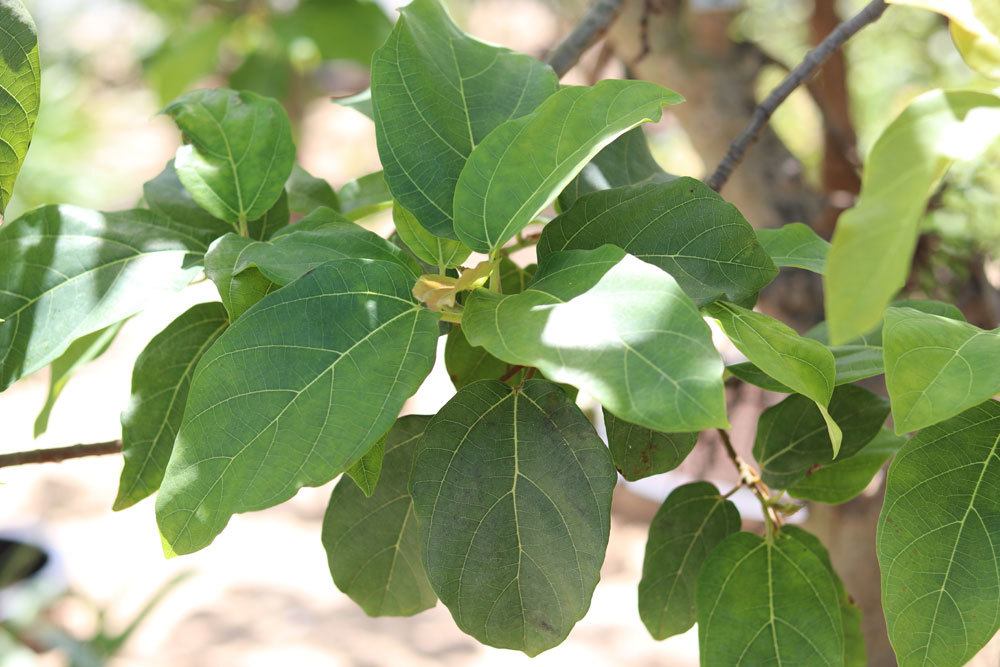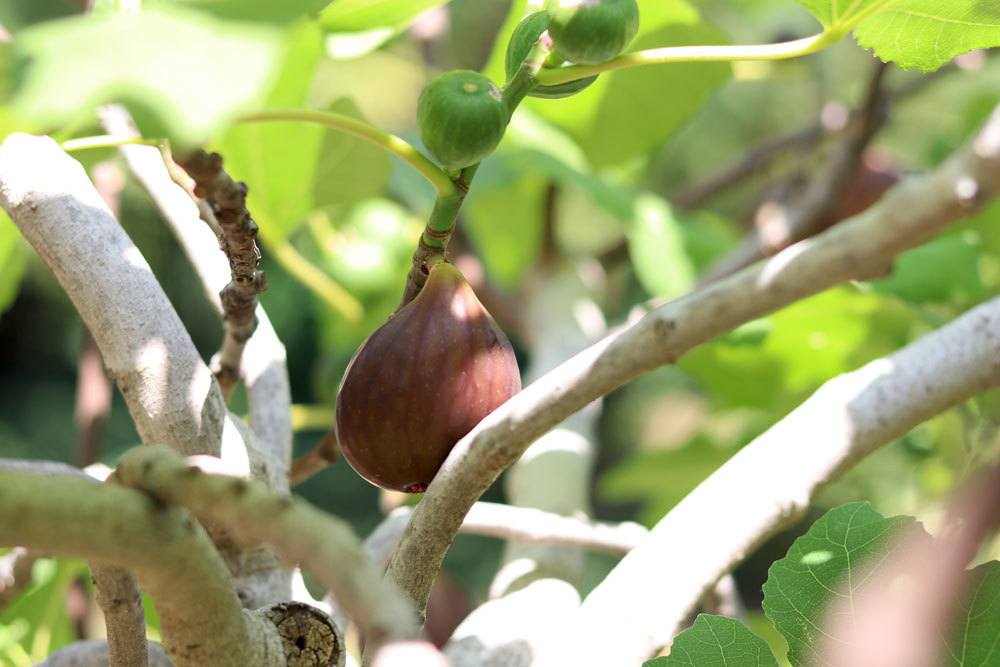Easy care fig tree thrives even if it does not receive pruning. If it was cultivated in the open ground, it can grow so very sprawling and reach a considerable size and width. But then the harvest of the tasty fruit is also often quite small. So the fig can be stopped with a targeted topiary, so that it does not look desolate in the garden. And fruiting can also be stimulated by, for example, spring pruning.
Contents
Ideal time
The ideal time for education and also maintenance pruning of the fig are the late winter months of February and early March. In any case, spring pruning should be done before the new shoots of the fig tree. In the fall, figs that are cultivated outdoors should not be pruned back. This is because there is a risk of frost penetrating through the cuts and damaging the tree as a whole.
Trees cultivated in tubs or directly in front of a house wall, which move to a frost-free room over the winter or are otherwise protected, can or should even be pruned in the fall. This is because it is easier to prepare a smaller tree for winter. In addition, summer pruning can be done to remove long shoots.
Tools
The main tools needed for pruning are sharp and disinfected. If the tools are not sharp, there will be bumps and cracks at the cut, where bacteria and viruses can penetrate more quickly. If the tools are not disinfected, adhering bacteria, viruses or fungal spores can also penetrate. Agents for disinfecting are available in well-stocked garden stores, pure alcohol from the pharmacy is also recommended here.

For pruning and shaping the following devices are recommended:
- Rose shears for young shoots
- pruning shears for older shoots
- Saw for thick branches
Whenever pruning, care should be taken to wear long clothing and gloves. This is because even minor injuries to the wood or even the breaking off of large leaves emit a milky sap that is slightly toxic and can cause skin irritation if touched.
Spring pruning
A fig tree that has been cultivated outdoors is usually pruned back in February or March, when budding has not yet begun. When doing this, make sure that you cut back mainly damaged branches and shoots. One- or two-year-old shoots are particularly susceptible to frost, while older branches are usually not affected by frost damage.
In addition, an older fig tree tends to become bald from the inside, which can also be remedied by pruning. Therefore, spring pruning for outdoor trees should be done as follows.
This is how you proceed:
- always cut from the bottom up
- cut off thick shoots that hinder growth near the ground
- remove all dead or frozen branches and shoots
- always leave one branching or one eye
- new shoots will form from this in the summer
- in case of older fig tree, cut back vigorously
- in this way it is prevented from thickening
- however, in the year of pruning fruits must be renounced
It should always be ensured that as many biennial shoots as possible remain, since the flowers and fruits form on these. In addition, in the case of larger cuts, for example when a thick branch has been removed, tree wax should be spread on the wound, which acts like a plaster.
Summer pruning
Potted plants can also be cut back in summer without further ado if long shoots grow out of the crown or root ball and disturb the overall appearance. However, care should be taken to ensure that the selected shoots have flowers or are already bearing fruit. Outdoor figs can also be pruned once again in this way, when the first frost nights are still a long way off.
Autumn pruning
In the fall, just before wintering, only those fig trees that will be protected from frost should be pruned. These include container plants that are moving to winter quarters, or plants that have been cultivated directly in front of a house wall or in a corner, and here they can also be completely covered with plant fleece. With these figs, it is especially important that they do not grow so sprawling, so when pruning in the fall should pay attention to the following.

This is how you proceed:
- leave two-year-old shoots as a rule
- cut out shoots that interfere from the inside
- cut back so far that the tub plant fits into the winter quarters
You can cut back the fig tree in a tub or on a house wall/corner as far as you wish. Fig trees can also tolerate a larger pruning. Enough biennial shoots should remain to ensure harvest again next summer.
Maintenance pruning
Maintenance pruning can be done at any time of the year, even for outdoor figs. This is because it helps the fig to thrive better. Thus, maintenance pruning involves the removal of the following plant parts.
- dead or frozen branches and shoots
- can be removed at any time
- yellowing leaves
- dead fruits
In this way, the tree regains enough strength to continue growing. Radical pruning is also possible as a maintenance pruning. If, therefore, most of the branches and shoots have died during a hard winter, or an old tree has become bare, then only radical pruning will help. In this case, the fig is cut back to ground level altogether. The tree will sprout again from the root.
Of course, some patience is then required here until Ficus carica is again ready to form new fruits. Therefore, it makes more sense to protect the tree in winter and prune it regularly to prevent frost damage or scabbing from occurring in the first place.

Education pruning
Education pruning should be done before the new shoots in late winter. This is usually done for the development of a beautiful crown. Therefore, the following procedure should be followed for the education pruning.
- remove all disturbing shoots directly near the ground
- leave a central, straight main shoot as the later trunk
- also remove secondary shoots in the crown area
- remove all shoots growing inwards
- remove crossing shoots
- leave some new shoots
- but leave only two main shoots in the crown area
- shorten one main shoot, which is too long
- make a round shape, cut all overgrown branches
- prune the crown in such a way that there is always enough light coming from inside the tree
Educational pruning is not only used for shaping an attractive crown, it can also be crucial for fruit formation. This is because fruit only forms on the two-year-old shoots, so care should be taken to leave as many of these as possible so that the harvest is plentiful. And fruits also develop on the new shoots, but only later in the year. Therefore, if annual and biennial shoots are encouraged during pruning and not removed, there may be two harvests in the year.
Fig tree as a trellis
A fig tree can also be cultivated in a trellis. However, for this it needs the appropriate topiary. Especially in small gardens, trellis fruit is quite space-saving and can also replace a screen from the neighbor.
To do this, proceed as follows:
- Reduce the fig to two or three main shoots.
- these grow directly from the roots
- tie the main shoots to the trellis
- cut all the side shoots that interfere with the plant
- also cut shoots growing in the wrong direction
- tie all other shoots to the trellis
- make sure there is enough air and light between the individual shoots
The fig tree as an espalier can be cultivated individually in a large container or together with several plants in front of a fence or a house wall. The advantage here is the space that is saved, because the fig does not grow as sprawling as a tree with a crown. Of course, with this espalier fruit, the harvest is also smaller due to the few shoots. Nevertheless, this is a good option, even in a small garden or on a small terrace / balcony does not have to do without the tasty fruit.

